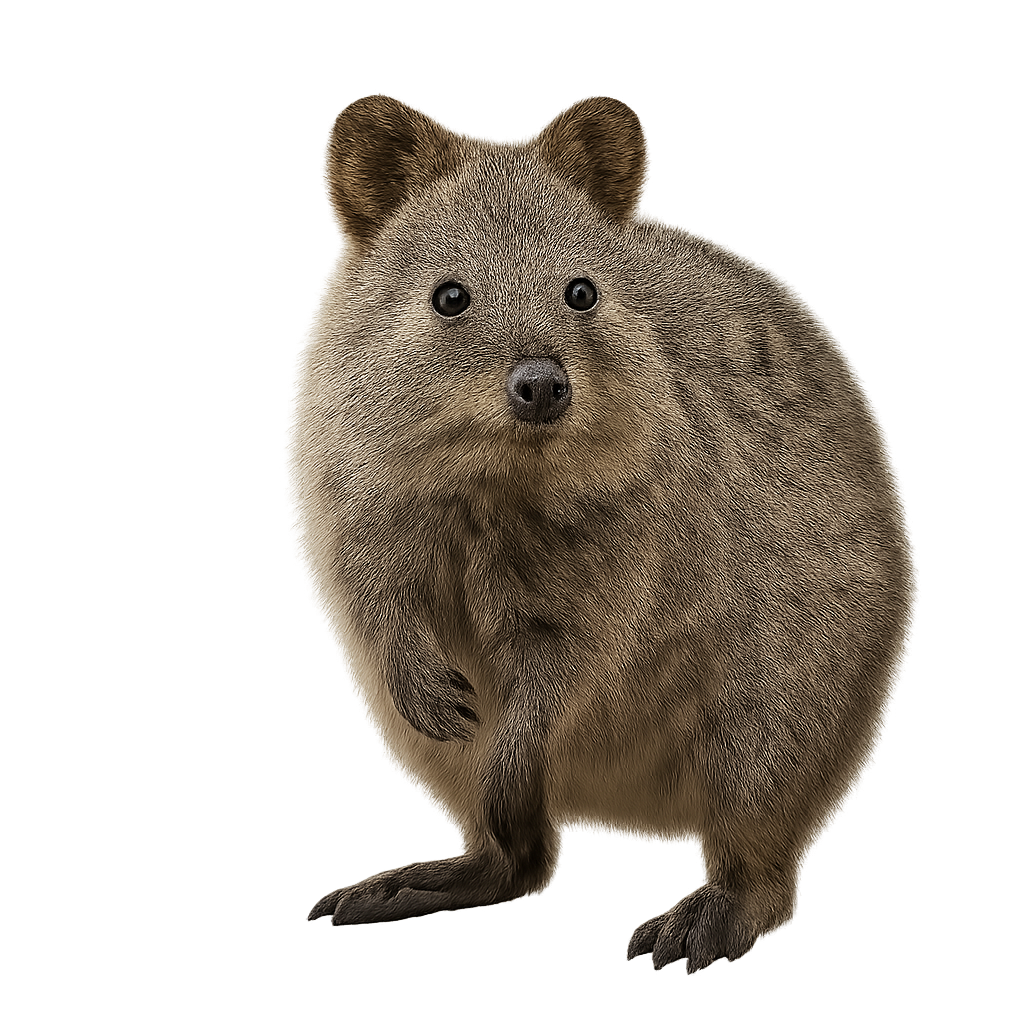Your wildlife photography guide.
Explore the quokka in detail, study its behavior, prepare your shots.
Where to observe and photograph the quokka in the wild
Learn where and when to spot the quokka in the wild, how to identify the species based on distinctive features, and what natural environments it inhabits. The WildlifePhotographer app offers tailored photography tips that reflect the quokka’s behavior, helping you capture better wildlife images. Explore the full species profile for key information including description, habitat, active periods, and approach techniques.
Quokka
Scientific name: Setonix brachyurus

IUCN Status: Vulnerable
Family: MACROPODIDAE
Group: Mammals
Sensitivity to human approach: Not very shy
Minimum approach distance: 3 m
Rut period: January to February
Gestation: 26-28 jours
Births: February to March
Habitat:
Forests, grasslands, coastal areas
Activity period :
Mainly active at night, generally discreet during the day.
Identification and description:
The quokka, or Setonix brachyurus, is a medium-sized marsupial native to Australia, often dubbed "the world's happiest animal" due to its smiling facial expression. It measures about 40 to 54 cm in length with a short tail of 25 to 30 cm. Its fur is brown-grey, dense, and woolly. Quokkas primarily inhabit Rottnest and Bald Islands near Australia's west coast. They are herbivores, feeding on leaves, grasses, and stems. Although mainly nocturnal, they can be active during the day. Quokkas are known for their curious and not very shy behavior towards humans, making them popular with tourists. However, it's important to respect their natural habitat and not feed them.
Recommended lens:
200 mm – adjust based on distance, desired framing (portrait or habitat), and approach conditions.
Photography tips:
To photograph a quokka, it's advisable to use a 200mm lens or longer to capture detailed images without disturbing the animal. Quokkas are often active at dusk and night, so good lighting is essential. Avoid using flash as it may startle them. Be patient and wait for them to approach naturally. Always respect their space and do not feed them to get a shot.
The WildlifePhotographer App is coming soon!
Be the first to explore the best nature spots, track rutting seasons, log your observations, and observe more wildlife.
Already 1 415 wildlife lovers subscribed worldwide

